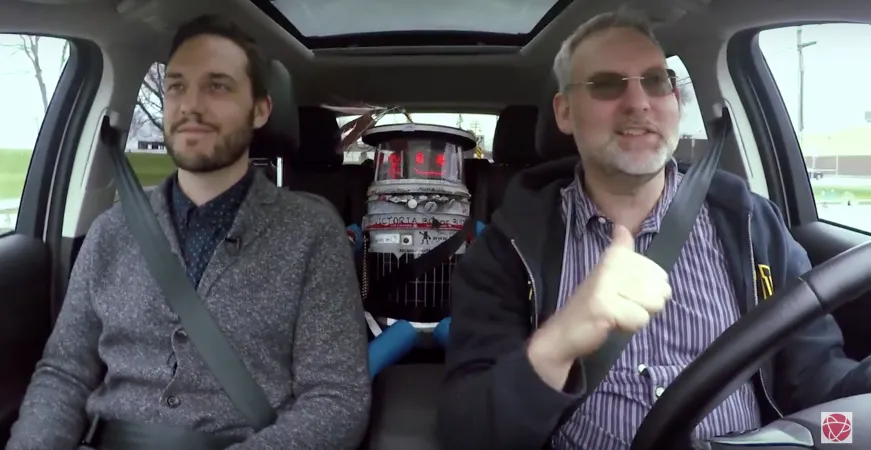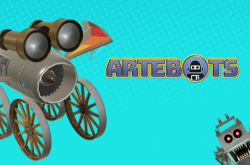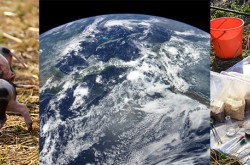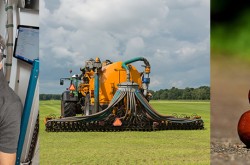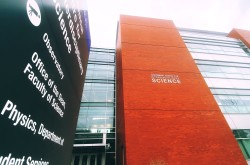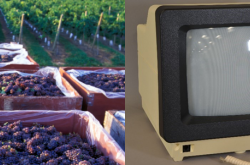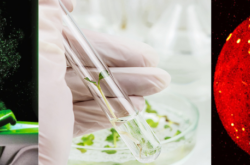Science Alive! Episode 7: Hitchbot!
Take a ride with Hitchbot on this edition of Science Alive! What would you do if you saw a smiling robot by the side of the road… a robot with a plastic bucket for a body, pool noodles for arms and legs, and big rubber boots? Created to learn about how people interact with technology and ask the question, “Can robots trust human beings?” Hitchbot crossed Canada and most of Germany and the Netherlands. It was two weeks into its trip across the United States when reports say it was destroyed by vandals in Philadelphia. So...how did it end up at a museum in Ottawa?
Transcript
00:14
the robot made of pool noodles of
00:17
plastic gear bucket and wellington boots
00:18
that travel across Canada pop in it's
00:21
time to meet hitchbot on this edition of
00:23
science alive I'm a tom everett he's a
00:28
curator of communications at the canada
00:30
science and technology museum so Tom
00:32
what's sitting in the back seat a touch
00:35
pot and why was it built so hitch bar
00:38
was designed as a kind of part art
00:40
project part social experiment to see if
00:42
robots could trust humans right and
00:45
what's it made out of so hitch bots made
00:48
out of plastic white it's actually I
00:50
believe a beer cooler kind of what you
00:54
would use to make home brewing yeah
00:55
something like that and yeah pool
00:58
noodles for arms and legs the trademark
01:00
wellington boots yeah and it's powered
01:03
by a tablet computer that connects to
01:04
the internet and wasn't hitchbot
01:07
destroyed yeah well hitchbot was
01:10
destroyed but not this hitchbot so this
01:12
is the original canadian hitchbot right
01:14
the hitchhiked across canada in 2014
01:17
successfully and after the trip they
01:19
retired hitchbot and another one was
01:21
built that hitchhiked germany
01:22
successfully and then was destroyed in
01:24
Philadelphia and why was it created to
01:27
begin with well the idea was to see if
01:29
they built a robot with some artificial
01:32
intelligence that new some social
01:35
etiquette and could be entertaining and
01:36
fun whether it could convince regular
01:38
people to take it across Canada right
01:40
and take it where I wanted to go and it
01:43
was a success so if you saw it sitting
01:46
by the side of the road and you picked
01:47
up hitchbot you can chat with it yeah
01:50
absolutely so hitchbot is always
01:51
connected to the internet and has
01:53
artificial intelligence software so it
01:55
had certain questions that it it would
01:57
anticipate that you would ask but it
01:59
also could answer unanticipated
02:01
questions using some online software it
02:04
also would play games with you had jokes
02:07
to tell things to to sort of break the
02:09
ice right when chiltern where did they
02:12
drop it off and how far did it get so
02:15
hitchbot was originally dropped off in
02:17
Halifax Nova Scotia in July 2014 and it
02:21
made it all the way across Canada to
02:23
Victoria British Columbia
02:24
so people would just pick it up and take
02:26
it as far as they wanted put it back at
02:28
the side of the road right it's been on
02:29
canoe trips it's been on ferry ride they
02:31
spend the wedding's hung out with rock
02:33
stars Olympians yeah and why did the
02:37
Museum of Science and Technology want it
02:39
well for us on you know it's what's got
02:42
this great Canadian story developed at
02:44
communion universities by Canadian
02:46
researchers but it also it has this
02:50
great canadian roadtrip story attached
02:52
to it it involved it wasn't just a lab
02:54
experiment right you know hits but hitch
02:56
spot was placed at the side of the road
02:57
and people just decided to take part
03:01
pick it up so it's got this great story
03:03
but it also speaks to a very specific
03:04
historical moment I think you know the
03:07
idea of human-computer interaction and
03:10
the sort of bizarre hitchhiking
03:11
experiment seems a bit weird now but I
03:13
think in hindsight that will make a lot
03:14
of sense as we become more invested in
03:17
technologies that don't just do things
03:20
for us but can communicate with us long
03:22
but we are getting used to talking to
03:23
our computers it's chewy out with the
03:26
technologies like series a really
03:27
popular example these personal digital
03:30
assistants that have artificial
03:31
intelligence that allow us to ask some
03:33
questions making complete commands or
03:35
make conversation with us are becoming
03:37
more popular and hitchbot might seem a
03:39
little bit weird or kooky now but I
03:41
think in hindsight it'll make a lot of
03:43
sense and it will be able to speak speak
03:46
a lot to this particular moment tom
03:48
everett a curator of communications at
03:51
the canada science and technology museum
03:52
tom thank you for telling us about it
03:54
hey thanks for picking us up this was
03:56
science alive



